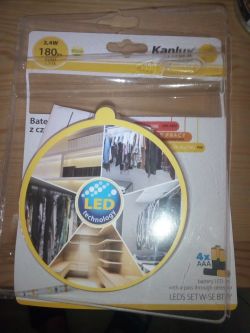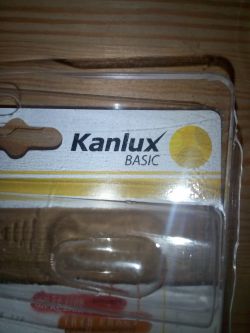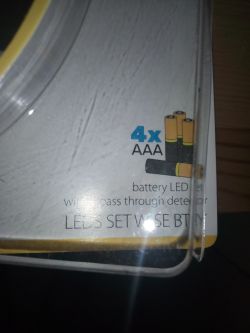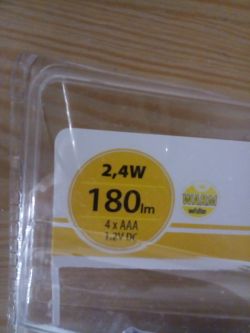Hello all.
As I did not find anything on this topic in the forum I created a new topic. I am asking for some hints if someone comes to mind how to solve my problem because I personally lack ideas.
1. The problem is that I need to power the LED strip mounted on the portable device. It is not possible to connect directly to the network.
LED strip parameters:
LED type: 5050 (PLCC6)
LED quantity: 300 / roll, 60 / m
Forward current: 6A
Output power: 72W
Supply voltage: 12V DC
Viewing angle: 120 °
Luminous flux (brightness): 1050lm
Dimensions: 10x5000mm
Packaging: 5m roll
Ground color: white
!!!!! IMPORTANT !!!!! I need to feed about a meter of such tape.
2. At the beginning I used a 12V 4.5 Ah gel battery for power supply. However, due to the size and weight of the battery, I am looking for another solution.
3. Another idea that came to my mind was the use of a 10000mAh power bank. To this end, I plugged in a step up converter.
Link to the inverter store:
https://botland.com.pl/przetwornice-impulsowe...search_query=przetwornica+step+up&results=102
However, the effect is not as expected. At full power, the LED strip glows steadily for about 30 seconds to a minute and then begins to shine intermittently. In addition, the converter, which in theory should not generate heat, heats up.
4. My guess is that the inverter has a low current output compared to the LED strip's current demand.
5. The question is. What other converter should I use for my "project". Alternatively, what other power source should be used to make it comparable in size and comparable to a power bank.
Thank you in advance for your help.
As I did not find anything on this topic in the forum I created a new topic. I am asking for some hints if someone comes to mind how to solve my problem because I personally lack ideas.
1. The problem is that I need to power the LED strip mounted on the portable device. It is not possible to connect directly to the network.
LED strip parameters:
LED type: 5050 (PLCC6)
LED quantity: 300 / roll, 60 / m
Forward current: 6A
Output power: 72W
Supply voltage: 12V DC
Viewing angle: 120 °
Luminous flux (brightness): 1050lm
Dimensions: 10x5000mm
Packaging: 5m roll
Ground color: white
!!!!! IMPORTANT !!!!! I need to feed about a meter of such tape.
2. At the beginning I used a 12V 4.5 Ah gel battery for power supply. However, due to the size and weight of the battery, I am looking for another solution.
3. Another idea that came to my mind was the use of a 10000mAh power bank. To this end, I plugged in a step up converter.
Link to the inverter store:
https://botland.com.pl/przetwornice-impulsowe...search_query=przetwornica+step+up&results=102
However, the effect is not as expected. At full power, the LED strip glows steadily for about 30 seconds to a minute and then begins to shine intermittently. In addition, the converter, which in theory should not generate heat, heats up.
4. My guess is that the inverter has a low current output compared to the LED strip's current demand.
5. The question is. What other converter should I use for my "project". Alternatively, what other power source should be used to make it comparable in size and comparable to a power bank.
Thank you in advance for your help.






